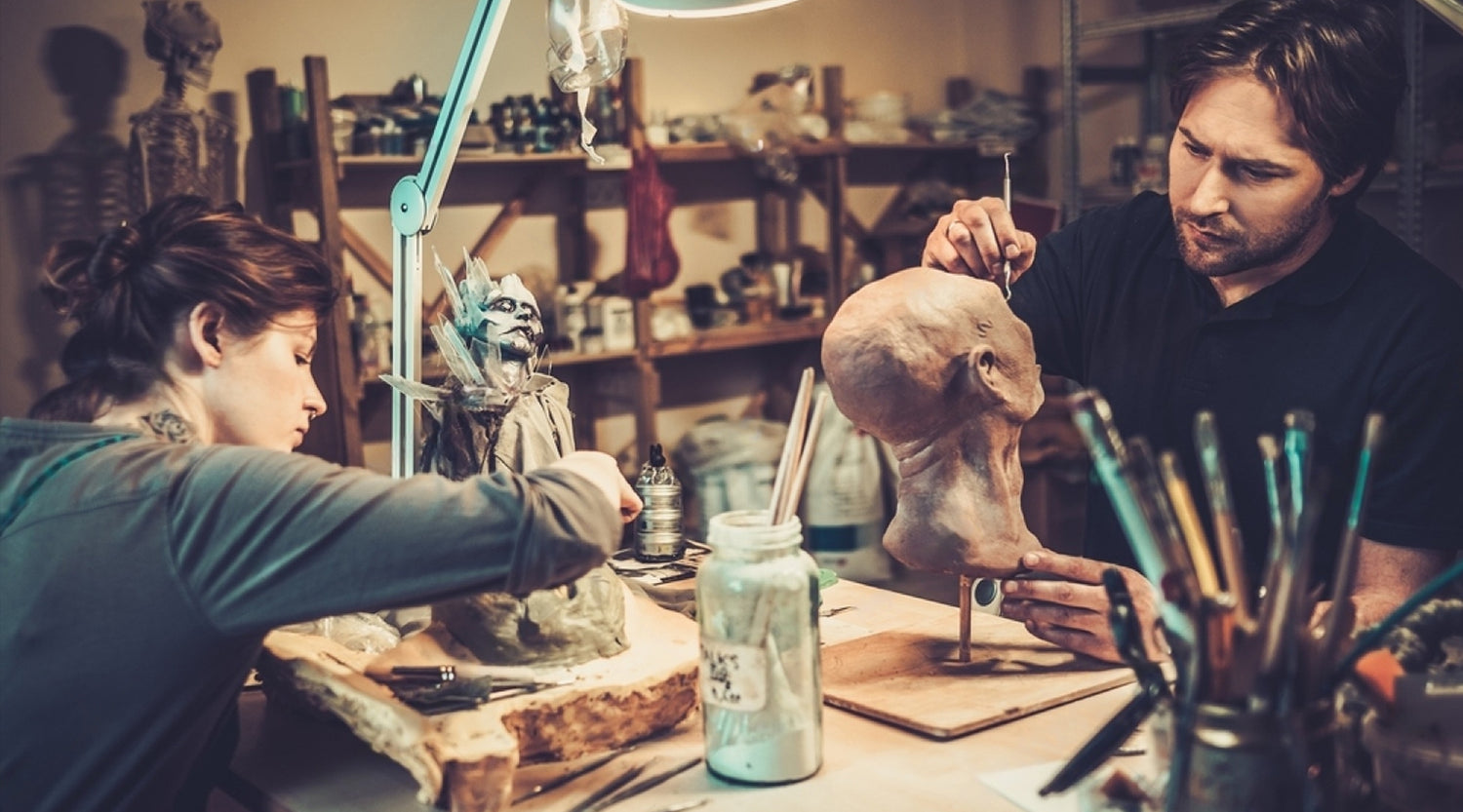Every skill takes time to reach perfection. Artists go through a process of learning by trial and error.
By the nature of their field of work, SFX artists are encouraged to think out of the box and experiment with the various tools available to them.
SFX makeup is far from the conventional makeup people wear daily; the looks range from the most straightforward vampire teeth to gory zombies and incredibly realistic werewolf getups.
In other words, there are no boundaries when it comes to this kind of makeup. Go crazy!
However, even in this industry, there are a few don’t-do-its that you must avoid, and in this blog post, I will discuss the most common mistakes SFX makeup artists make.
That’s not all, though! I’ll also tell you how to fix these mistakes. Intrigued yet? Keep reading!
Mistake #1: Overuse of Fake Blood
I know it’s tempting to use fake blood when creating SFX looks as much as you can. After all, it brings your whole look together.
However, overusing it is a common mistake in the industry. It can overshadow all the textures and layers of the look and make it look monotonous, something no SFX artist wants!
I’d suggest only using as much as is required; for example, if it’s a gunshot wound, the blood you’ll use around the wound should be enough to make it look realistic but shouldn’t cover up the prosthetic work used to create the bullet wound itself.
On this note, what to do if you’ve accidentally used too much blood? No need to panic. Oil-based products like Vaseline or olive oil can break up the blood, making wiping it easier.
Mistake #2: Using Bad SFX Products
By bad, I mean low-quality and unsafe SFX makeup products that are unpleasant to work with and, in severe cases, can cause harm.
A good example would be using spirit gum as an adhesive; many people are allergic to it. Plus, it doesn’t adhere as well as it should either. Instead, experts in the industry suggest using Pros-Aide adhesive as an alternative since it’s odorless and doesn’t irritate the skin.
Another thing I’d like to point out is using dangerous tools like real glass and other sharp objects to create SFX looks that can substantially damage your eyes, mouth, etc.
Worried that your creation won’t come out looking realistic enough? You can dedicate some time to making fake tools using plastic and other softer materials to give you the desired look.
Remember, your client’s safety comes first at all times.
Mistake #3: Using Different Shades of Latex
Latex is commonly used to create SFX prosthetic looks like wounds, scars, etc.
Just like how one can wear a foundation shade too dark or too light compared to your skin, SFX artists make the mistake of using a different shade of latex than your natural color. It’s a dead giveaway, making it obvious that it’s fake.
Suppose you’ve already worked through placing the prosthetic and realize the shades are different. In that case, you can add a layer of paint/watercolor to even out the colors.
However, it could damage the seamless surface you might’ve created. Be careful.
Mistake #4: Unblended Prosthetics
When using prosthetics to create bullet wounds and scars, they should look as natural as you can make them. If the edges of the latex/silicon are peeking through, that defeats the purpose of the whole SFX makeup.
To seamlessly blend in the edges of scar wax, for example, add Vaseline (surprise, surprise!) to it and let it work its magic.
Note: Vaseline comes in handy during the SFX makeup process at so many instances!
Mistake #5: Going Overboard with SFX Makeup
Shocking in this context, but sometimes, less is more.
I get the excitement of creating unique looks, but there’s a risk that your work starts looking a bit too unrealistic, which is not the goal of SFX makeup, especially for those who aim to work in this field professionally,
An easy way to fix this habit is to search for reference pictures and mimic them while adding a little bit of your touch to the designs.
The Bottom Line
Learning SFX makeup is an ongoing process that demands time and utmost patience. Still, a good start would be to look out for these five common mistakes and try to avoid them as best as possible!
A little effort goes a long way in perfecting your talent.





